It’s been a crazy busy week, so I’m only just now catching up on here on the blog — to say a few words about last weekend’s events in the Saltaire area. It was the Annual World Heritage Weekend celebrations for Titus Salt’s Victorian mill village — part of a worldwide celebration of UNESCO-designated heritage sites. Saltaire has been participating for 5 years now, but this was the first year when the Higher Coach Road estate was officially ‘on the map’ for the Heritage celebrations (as you can see from this map, from the WHW leaflet)…
Higher Coach Road falls comfortably within the “buffer zone” which restricts planning within sight of Saltaire (subject to UNESCO approval), and of course the whole area that the estate is built on once belonged to Sir Titus Salt. But the residents chose to mark the occasion by celebrating their own “heritage” as a post-war council estate by hosting a 1950s picnic … for themselves, and anyone else who wanted to join in….
The 1950s picnic was initially the brainchild of resident Ruth Bartlett, pictured below in this rather curious picture that appeared in the online version of theTelegraph and Argus
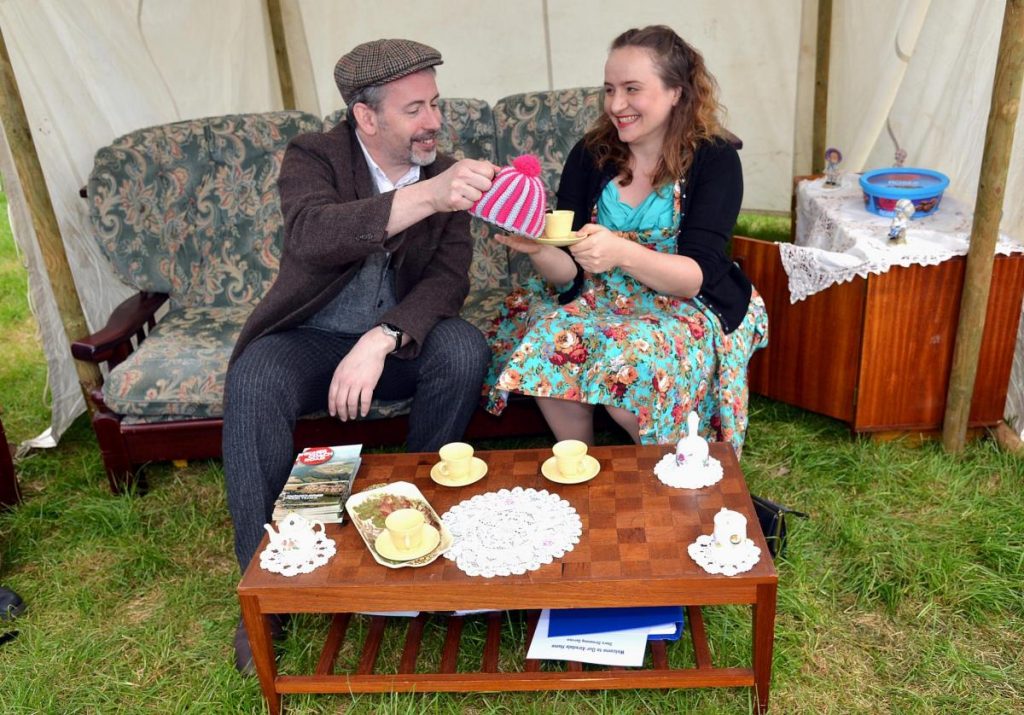 Ruth is pictured here having (no) tea poured for her by myself, Steve Bottoms. The T&A photographer, having turned up at the very beginning of the 12-4 slot during which we’d said the picnic events would occur, found that not that many people were there yet (because, seriously dude, who turns up at a party in the first minute?), and so asked those of us who’d dressed up to pose with embarrassed grins for the camera…
Ruth is pictured here having (no) tea poured for her by myself, Steve Bottoms. The T&A photographer, having turned up at the very beginning of the 12-4 slot during which we’d said the picnic events would occur, found that not that many people were there yet (because, seriously dude, who turns up at a party in the first minute?), and so asked those of us who’d dressed up to pose with embarrassed grins for the camera…
Ruth and I are seated here in the “outdoor living room” that was Multi-Story Water’s contribution to the festivities. Cleverly assembled by Anna Parker from visits to a string of charity shops, this installation of 50s furniture and nick-nacks was well populated over the course of the afternoon, as people came and sat down on the surprisingly comfortable furniture to enjoy the sunshine. (it was behind a cloud when the photographer came, naturally…) That blue folder poking out from under the coffee table contained a selection of stories I had prepared about the area and its community and watery histories. I read these on request, in response to people picking titles from a menu we provided… such as “The Malicious Mr. Pickles”, “Higher Coach Road in the Ice Age” and “Ten Minutes of Madness (The Derwent Avenue Murderer)”. This was our “streaming service” for an age when most people didn’t have television yet… and it seemed to go down remarkably well! Some of the stories prompted considerable discussion. One resident, for example, shared her memories of working at Salts Mill in the 1970s — because she remembered as a co-worker the victim of the murder in my “ten minutes of madness” story (a black tale for a sunny day – it proved an unexpectedly popular choice!).
Ruth and I had also collaborated on writing this leaflet, launched on this occasion as a joint effort of MSW and HCR Residents Group (the image shows the inside of the ‘gatefold’). In this slightly-tongue-in-cheek “heritage” leaflet, which will also be available from Saltaire Visitor Information Centre, we wanted to make the case for this estate as “Saltaire’s Other Model Village” — a development planned to blend in with its green and pleasant environment, which residents still take great pride in.
Here’s another of the shots from the T&A, with Saltaire’s towers visible in the background. Dressed in their versions of the 1950s are the current and recent chairs of the Higher Coach Road Residents’ Group — Pam Ruppe and Stewart Gledhill — who are flanked on either side by Kat Martin (left) and Lyze Dudley (right), both part of the Multi-Story Water team who dressed up for the day.
Now, it does rather look from these pictures as if nobody else was there… which is not in the least bit true. I’ll post other shots from the day as soon as I have access to them. [editor’s note: sure enough, other pics can be found here and here]. It was a perfect day for sitting out in the sun, for a chat with neighbours — whether enjoying food from the sandwich and cake stall masterminded by Irene Townend and other HCRRG members, or a little storytelling, or listening to music. We had “the bard of Saltaire”, Eddie Lawler, playing live on his acoustic guitar, and also a collection of old 78 rpm records from the 1950s that we played on the little machine pictured below (with which I was asked to pose for the most embarrassing photo op of the afternoon…). The most popular tunes turned out to be Cliff Richard‘s “Please Don’t Tease” and Brian Hyland’s “Itsy Bitsy Teeny Weeny Yellow Polka Dot Bikini” (which several picnickers seemed to know word for word by heart, and sang along…). Admittedly both those tunes were actually released in 1960, but what’s a year between friends? This is when a lot of people would have been moving onto the estate anyway: construction began in 1957, but continued until the early 60s.
After the picnic wound down, and we’d packed up the outdoor living room, Kat and I made our way to Fanny’s Ale House, for the first of three Saltaire-area performances this weekend of This Island’s Mine — the short play celebrating the history of Dockfield, which I discussed in detail in my last blog post. Again, it was nice to be complicating the “official” heritage story of World Heritage Weekend, by drawing attention to another, less celebrated Shipley neighbourhood. (In Dockfield’s case, the major developments occurred not in the Victorian or post-WWII periods, but at the beginning of the 20th century, when Shipley Council built Dockfield Road, Dockfield Terrace, and local works for gas, electricity and sewage). And on Sunday afternoon, in the bar of Salts Sports Association (just across the river from the Coach Road estate), it was a particular pleasure to perform the play for an audience made up of members of the Higher Coach Road Residents Group…

This Island’s Mine ends with a speech from Kat (based on interviews with Dockfield residents) about how, for all the improvements in living conditions we have nowadays, we’ve perhaps lost something of the sense of close community that was experienced by many local residents growing up (in the years when this was still very much an industrial town). This was a sentiment that I recall being expressed particularly clearly to me by some of the people sitting at this table — Stewart and Pat, Irene and Barry — when I first met and interviewed them back in 2012. So it was a particular delight, with Higher Coach Road Residents’ Group having become such a dynamic source of community identity over the last couple of years, to be sharing this story with them. It turns out that, just because something seems to have been lost, doesn’t mean it can’t be rediscovered with a little goodwill and ingenuity — because that sense of community may well still be there, lying dormant, and ready to sprout again…
That’s Barry in the middle of the shot above. He grew up in Dockfield, and has lived on Higher Coach Road since the 60s. He contributed some great new additions to the collection of memories we’ve been gathering around this little play. And on the right in the image below is Steve, one of the most active current members of HCRRG, who went straight off from Salts to visit one of the older residents on the estate — as part of a “befriending” scheme that the group has started, to tackle the problem of isolation experienced by some. HCRRG is doing some amazing work now… I salute you all.
And so, back to Fanny’s Ale House, and the last of our scheduled performances of This Island’s Mine this weekend. For an audience that included Rob Martin and Molly Kenyon, the dynamic Saltaire duo who really got the World Heritage Weekend celebrations established as an annual thing these past five years (this year they’ve finally been able to step back a bit and let others take the lead). So it was great to share this with them too! That’s Rob’s knees in the bottom right of the shot below — after Kat had managed to attack them by accidentally knocking Rob’s pint off the table with one of her props… The perils of live theatre! Fortunately nobody was hurt, and the show continued once the glass was swept up by Fanny’s quick-reacting staff…
A particular highlight for me of this last performance was the way that the audience took it upon themselves to animate some of our table props… Below is one spectator’s interpretation of a story Kat tells, at the end of the piece, about canoeists being attacked by swans on the canal outside the Amber Wharf flats… So OK, it’s geese not swans, and a skateboarding lego man not a canoeist, but that is the spirit of improvisation!
Happy World Heritage Weekend everyone. A great celebration of past, present, and – perhaps – future…

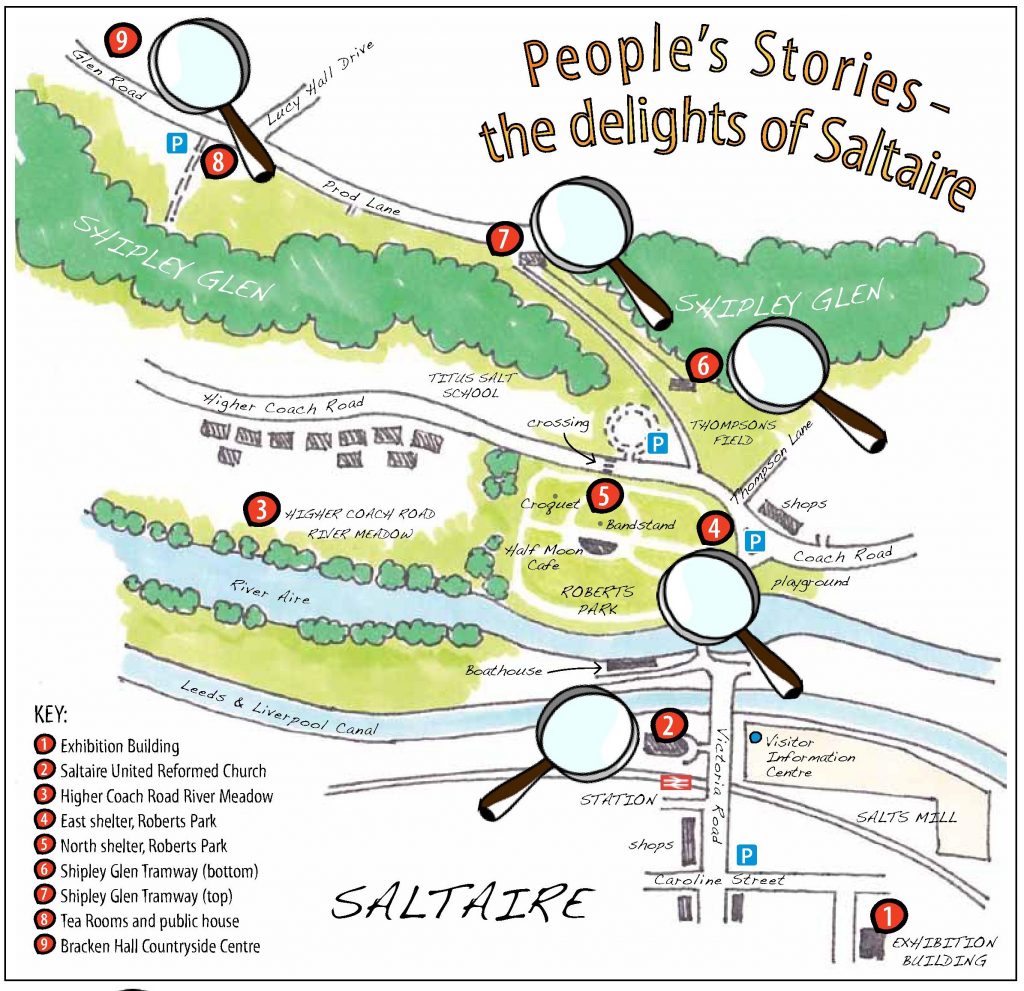
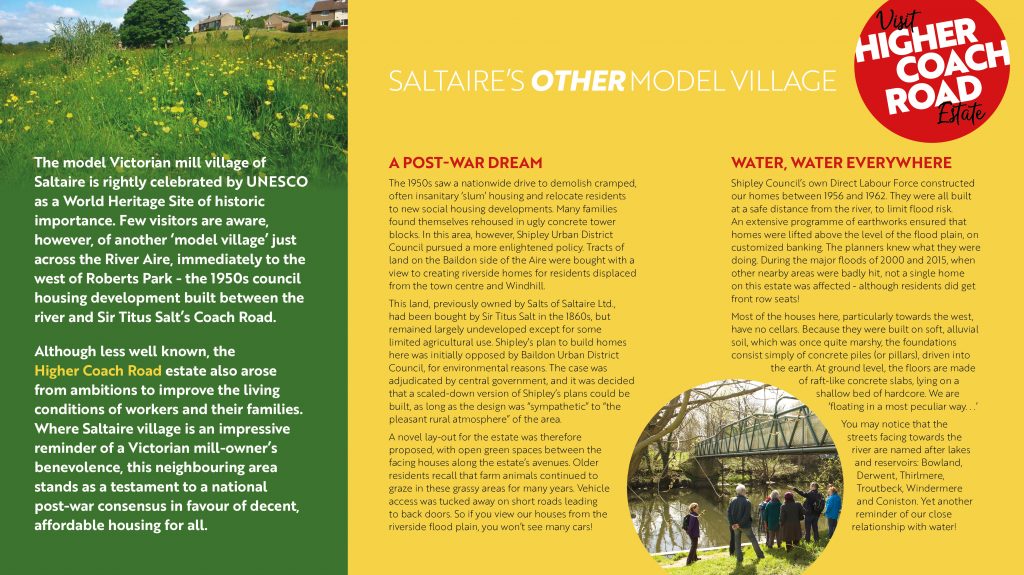
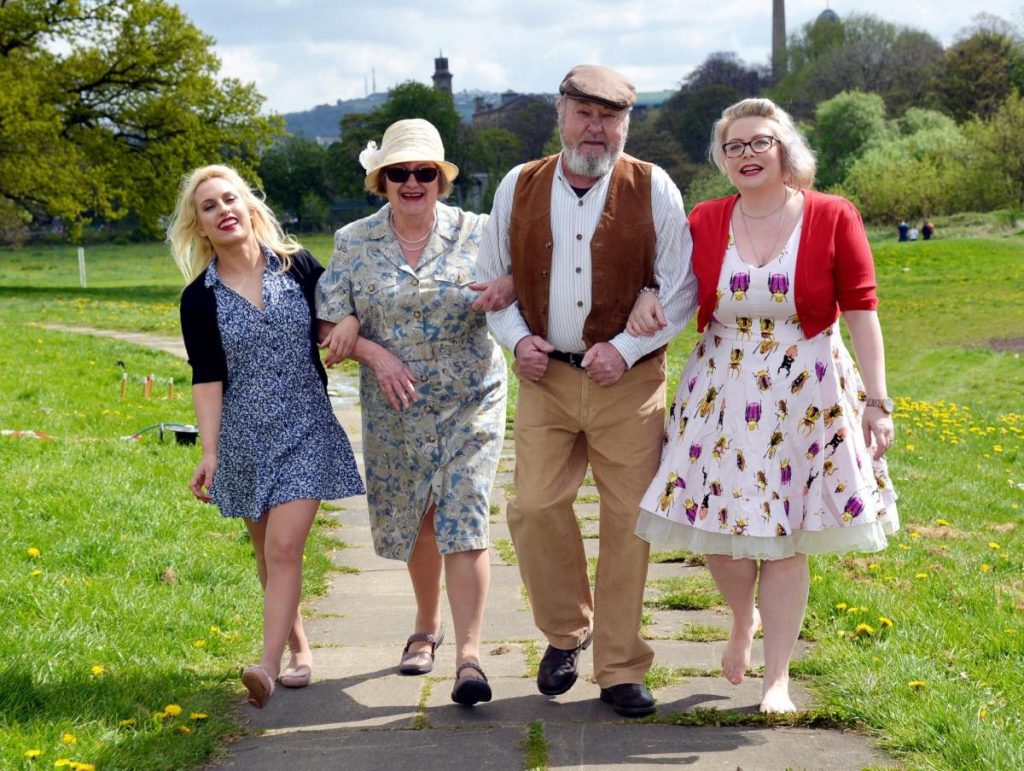
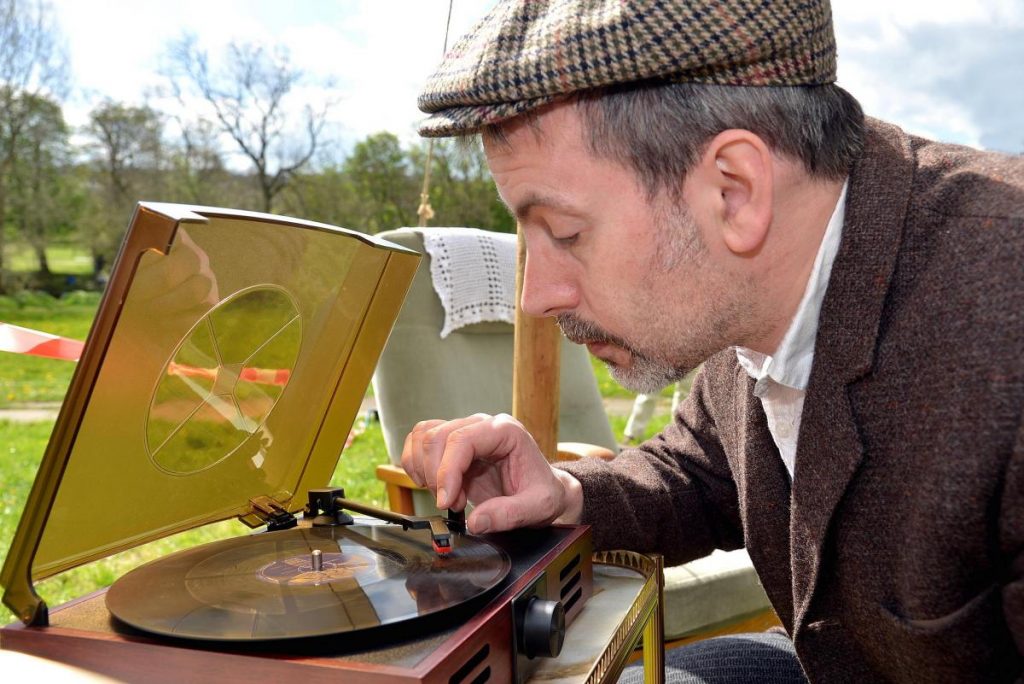
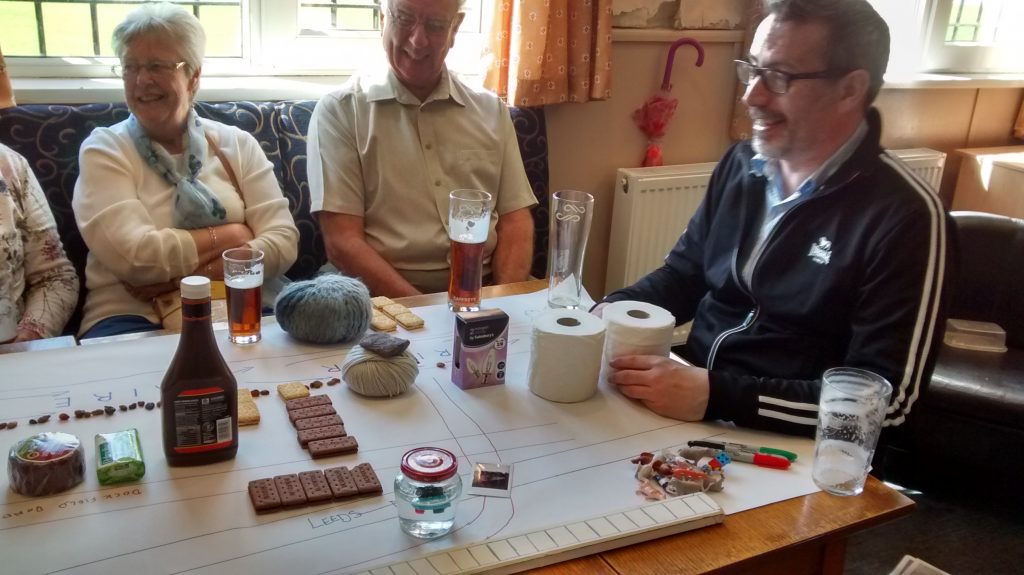
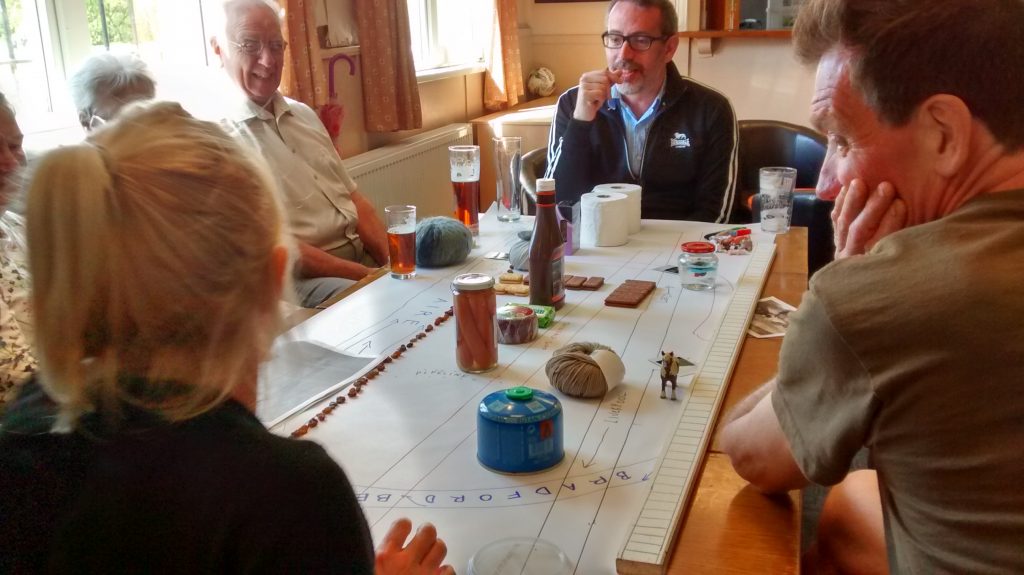
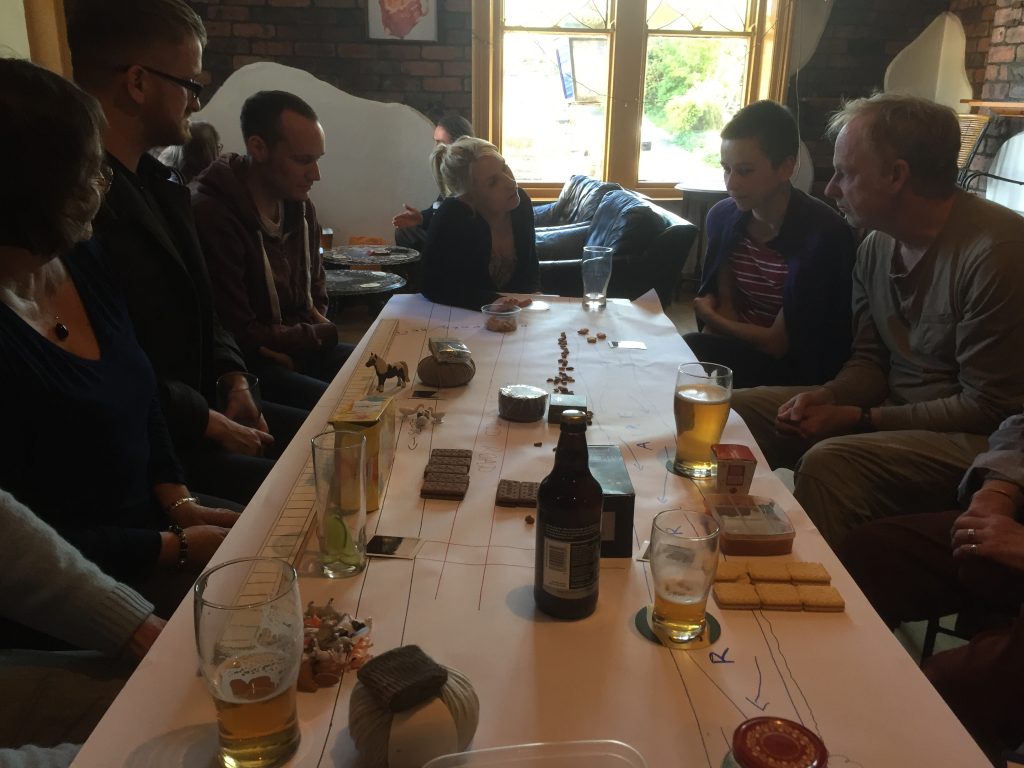
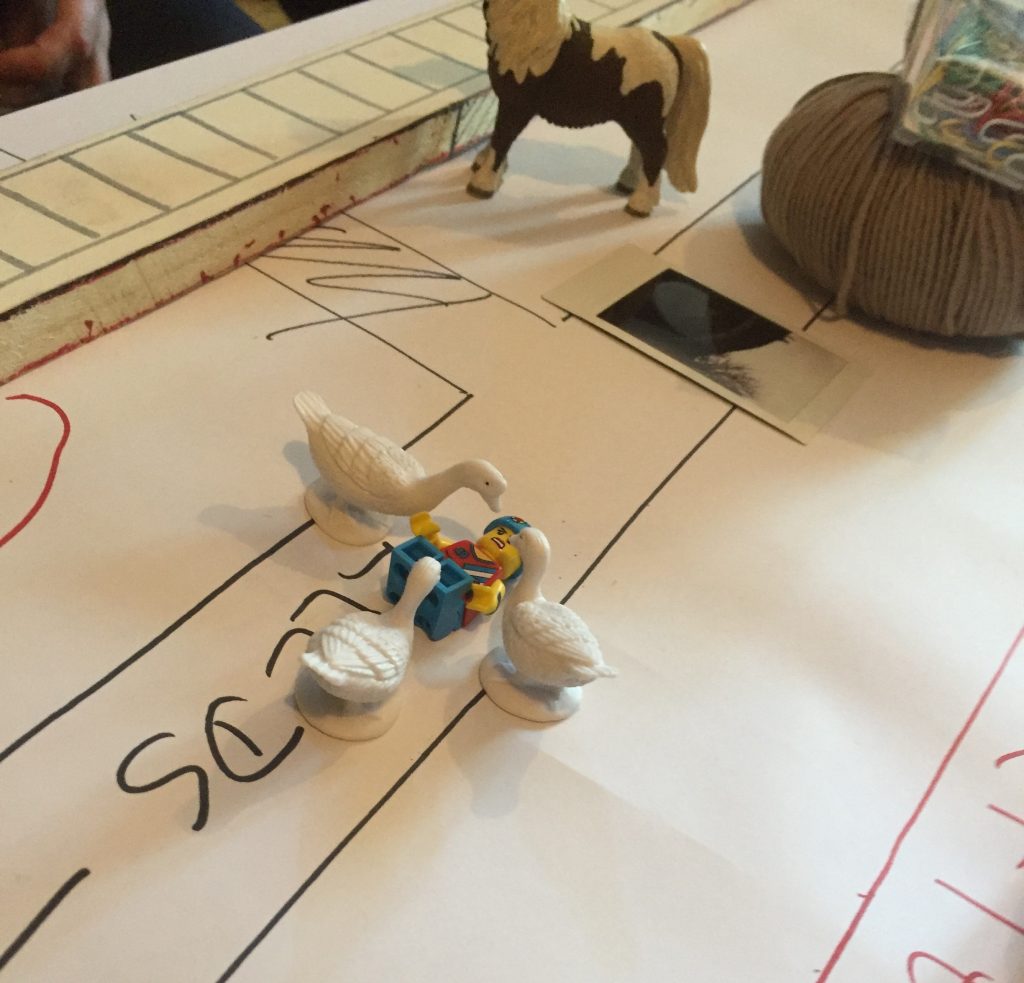
We loved the review Steve it is really interesting and the photos are great.
We also enjoyed the play last Sunday and it brought back some lovely memories of Dockfield Road. Thank You so much.
Good Luck
Irene and Barry